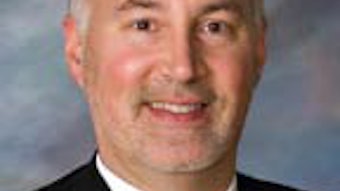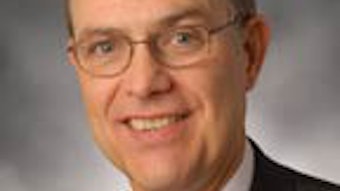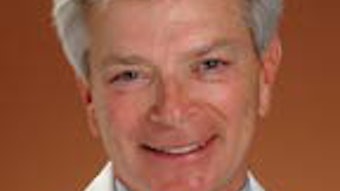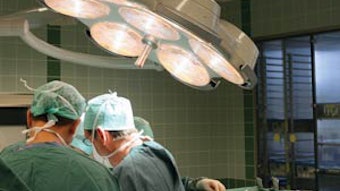Dear National Public Radio
The following is a letter written by Academy member Sujana Chandrasekhar, MD, in August 2010 to National Public Radio (NPR) about a program on hearing loss, quoting an audiologist. Dear NPR, I am an avid listener and contributor to NPR. I value it for the new knowledge it brings me, and for the accurate way NPR delivers stories on myriad topics. However, I was perturbed by your piece on hearing loss in U.S. teenagers on Aug. 20, 2010’s All Things Considered show, hosted by Michele Norris and Robert Siegel, and reported by Patti Neighmond. The paper referred to in the piece appeared in JAMA this week. There are four authors, all MDs, two of whom are otolaryngologists (ear-nose-throat physicians and surgeons). None of the authors is an audiologist. The conclusion of the paper is that, yes, there is a disturbing increase in the prevalence of hearing loss in U.S. teens, based on two large national surveys, one conducted from 1988-94, and the other from 2005-6, but the reasons for the increase are not clear and must be investigated more thoroughly. The paper also points out that medical causes for the hearing loss, such as conductive hearing loss, wax, otitis media, etc., were not tested for and cannot be excluded. It is a well-written paper that raises a very serious issue to the national spotlight. There are myriad causes for hearing loss, including cerumen (wax), foreign body entrapment in the ear canal, otitis media and externa (ear infections), congenital hearing loss, inner ear malformations, labyrinthitis, ossicular abnormalities, cholesteatoma, idiopathic sudden hearing loss, and noise-induced hearing loss (NIHL), to name a few. The best qualified professionals for thorough evaluation of hearing, hearing loss, and its causes are otolaryngologists—ear-nose-throat specialists—physicians who are subspecialty-trained in this field. NPR did not interview an ENT physician for this piece; instead, you only interviewed an audiologist. You called her Dr. Alison Grimes and stated that she “sees patients and does audiological tests” at UCLA Medical Center. Alison Grimes is not a medical doctor, a fact which was never pointed out in the NPR piece. She has a doctorate in Audiology, the science of testing hearing and balance. She is not able, by law, to make diagnoses or offer treatments. She cannot determine the cause of hearing loss and cannot intervene to correct it, unless a medical doctor clears the patient for fitting for amplification, such as hearing aids. Audiologists are valuable members of the hearing healthcare team, but they are not physicians and it is very important that patients and the public are made aware of this important distinction. For me, as a practicing otolaryngologist with subspecialty in otology/neurotology (disorders of the ear/hearing/balance/lateral skull base), the take-home message from this paper was that physicians—primary care as well as ENTs, nurses, school health personnel, and audiologists—are all members of a teen’s hearing healthcare team. They have to be much more proactive in examining ears and treating obvious problems, checking for metabolic, endocrine, or infectious diseases that can cause hearing loss, counseling parents, teens, and children regarding hearing health and avoidance of noise exposure, proper diet and exercise to maintain ear health, and being alert to the higher probability of hearing loss in a heretofore unheralded at-risk population. There are a number of patient-centered information leaflets available on ear function and disorders at the American Academy of Otolaryngology-Head and Neck Surgery website, which you might wish to peruse at http://www.entnet.org/HealthInformation/ears.cfm. You can also learn more about my specialty at http://www.entnet.org/healthinformation/AboutOtolaryngology.cfm. Thank you for your attention. I look forward to continuing to enjoy NPR and its reporting, and hope that you will stay alert to very important patient protection issues such as the one I raised here regarding “truth in advertising” of audiologists as audiologists and not as physicians. Sincerely, Sujana Chandrasekhar, MD Director, New York Otology Chair-Elect, AAO-HNSF Board of Governors

Dear NPR,
I am an avid listener and contributor to NPR. I value it for the new knowledge it brings me, and for the accurate way NPR delivers stories on myriad topics.
However, I was perturbed by your piece on hearing loss in U.S. teenagers on Aug. 20, 2010’s All Things Considered show, hosted by Michele Norris and Robert Siegel, and reported by Patti Neighmond.
The paper referred to in the piece appeared in JAMA this week. There are four authors, all MDs, two of whom are otolaryngologists (ear-nose-throat physicians and surgeons). None of the authors is an audiologist. The conclusion of the paper is that, yes, there is a disturbing increase in the prevalence of hearing loss in U.S. teens, based on two large national surveys, one conducted from 1988-94, and the other from 2005-6, but the reasons for the increase are not clear and must be investigated more thoroughly. The paper also points out that medical causes for the hearing loss, such as conductive hearing loss, wax, otitis media, etc., were not tested for and cannot be excluded.
It is a well-written paper that raises a very serious issue to the national spotlight. There are myriad causes for hearing loss, including cerumen (wax), foreign body entrapment in the ear canal, otitis media and externa (ear infections), congenital hearing loss, inner ear malformations, labyrinthitis, ossicular abnormalities, cholesteatoma, idiopathic sudden hearing loss, and noise-induced hearing loss (NIHL), to name a few. The best qualified professionals for thorough evaluation of hearing, hearing loss, and its causes are otolaryngologists—ear-nose-throat specialists—physicians who are subspecialty-trained in this field.
NPR did not interview an ENT physician for this piece; instead, you only interviewed an audiologist. You called her Dr. Alison Grimes and stated that she “sees patients and does audiological tests” at UCLA Medical Center. Alison Grimes is not a medical doctor, a fact which was never pointed out in the NPR piece. She has a doctorate in Audiology, the science of testing hearing and balance. She is not able, by law, to make diagnoses or offer treatments. She cannot determine the cause of hearing loss and cannot intervene to correct it, unless a medical doctor clears the patient for fitting for amplification, such as hearing aids. Audiologists are valuable members of the hearing healthcare team, but they are not physicians and it is very important that patients and the public are made aware of this important distinction.
For me, as a practicing otolaryngologist with subspecialty in otology/neurotology (disorders of the ear/hearing/balance/lateral skull base), the take-home message from this paper was that physicians—primary care as well as ENTs, nurses, school health personnel, and audiologists—are all members of a teen’s hearing healthcare team. They have to be much more proactive in examining ears and treating obvious problems, checking for metabolic, endocrine, or infectious diseases that can cause hearing loss, counseling parents, teens, and children regarding hearing health and avoidance of noise exposure, proper diet and exercise to maintain ear health, and being alert to the higher probability of hearing loss in a heretofore unheralded at-risk population.
There are a number of patient-centered information leaflets available on ear function and disorders at the American Academy of Otolaryngology-Head and Neck Surgery website, which you might wish to peruse at http://www.entnet.org/HealthInformation/ears.cfm.
You can also learn more about my specialty at http://www.entnet.org/healthinformation/AboutOtolaryngology.cfm.
Thank you for your attention. I look forward to continuing to enjoy NPR and its reporting, and hope that you will stay alert to very important patient protection issues such as the one I raised here regarding “truth in advertising” of audiologists as audiologists and not as physicians.
Sincerely,
Sujana Chandrasekhar, MD
Director, New York Otology
Chair-Elect, AAO-HNSF Board of Governors











